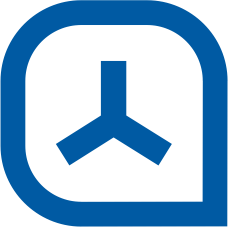Ultrasound examination of the heart via the oesophagus or a transoesophageal echocardiogram
The purpose of this leaflet is to provide information on a transoesophageal echocardiogram.
Why is a transoesophageal echocardiogram necessary?
With the help of conventional echocardiography, some areas of the heart and changes to it are difficult to assess, as the chest wall blocks the transmission of ultrasound waves. Therefore, a transoesophageal echocardiogram is used to get an accurate overview. The oesophagus is located in the chest, in close proximity to the heart, and a clear and accurate picture of the structure and functioning of the heart is obtained through this study. Although inserting a probe in the oesophagus can be uncomfortable, it is usually not unbearable.
If you have an oesophageal or pharyngeal disease that may prevent the insertion of the probe, be sure to inform your doctor. If necessary, a gastroenterologist may be consulted and alternative studies may be considered.
The aim of the procedure is to:
-
obtain a thorough overview of the functioning and structure of the heart, which an ordinary ultrasound examination may not show;
-
find blood clots or tumours in the heart cavity or specify diseases of the heart valves.
Before the procedure
-
Do not eat or drink dairy products or fleshy juices for a period of six (6) hours. Do not drink for four (4) hours before the procedure.
-
On the day of the procedure, you can take your daily medications with a little water, but the period of time between taking the medications and the procedure must be at least four (4) hours.
-
If you have diabetes, ask your doctor for advice on the use of diabetes medications (especially if you are injecting insulin).
-
Avoid alcohol consumption on the day before the procedure, as it may increase the effect of sedatives used during the procedure and cause disturbances in consciousness and breathing.
-
If you are allergic to sedatives, local anaesthetics (e.g. lidocaine), or latex, be sure to inform your doctor before the procedure.
-
In order for the procedure to be performed, you must give your written consent (‘Informed consent of the patient to the procedure’).
Performing the procedure
-
Before the procedure, remove dental prostheses to prevent them from entering the airways or breaking.
-
In the procedure room you will need to lie down on the examination table, where electrodes will be placed on your chest to monitor your heartbeat.
-
Before the procedure, the nurse will install a vein cannula on your hand.
-
The procedure will last between 30 and 60 minutes and will be carried out by a doctor.
-
During the procedure, you will need to lie on your left side.
-
The probe is covered with an anaesthetic gel to reduce discomfort.
-
Your throat will be anaesthetised with a lidocaine aerosol spray.
-
You will be given a small amount of a sedative via the vein cannula, which may cause dizziness, somnolence, or drowsiness. The procedure can also be done without a sedative.
-
The doctor will insert the probe orally into the pharynx and ask you to swallow it so that the probe moves into the oesophagus. The probe does not interfere with breathing.
-
The saliva flow is natural – the saliva flows out of the mouth next to the probe to prevent it from entering the airways.
After the procedure
-
Two hours after the procedure (recovery of the swallowing reflex), you can once again drink and eat.
-
If an intravenous tranquilizer was used during the procedure, you may not drive or use any other vehicle for 24 hours after the procedure.
-
Avoid actions that require accuracy on the same day, as sedatives can reduce your reaction rate.
Potential risks
Complications are rare, but the potential risks of an oesophageal ultrasound are:
-
breathing problems;
-
cardiac arrhythmias;
-
gastrointestinal bleeding;
-
injury to the oesophagus.
Your heart and blood oxygen levels will be monitored during the procedure. If necessary, an oxygen mask shall be used.
The results of the procedure will be sent electronically to your treating physician, who will provide you with additional information and recommendations.
If you have any questions about the procedure, please contact your doctor or nurse.
If you are unable to come to the procedure at the agreed time or would like to change the procedure time, please telephone 620 7417 and let us know as soon as possible.
ITK1284
Approved by the decision of the Medical and Nursing Care Quality Commission of
Aktsiaselts Ida-Tallinna Keskhaigla on 27. August 2025 (Protocol No. 2.2-8/3-25)
 Terviseportaal
Terviseportaal